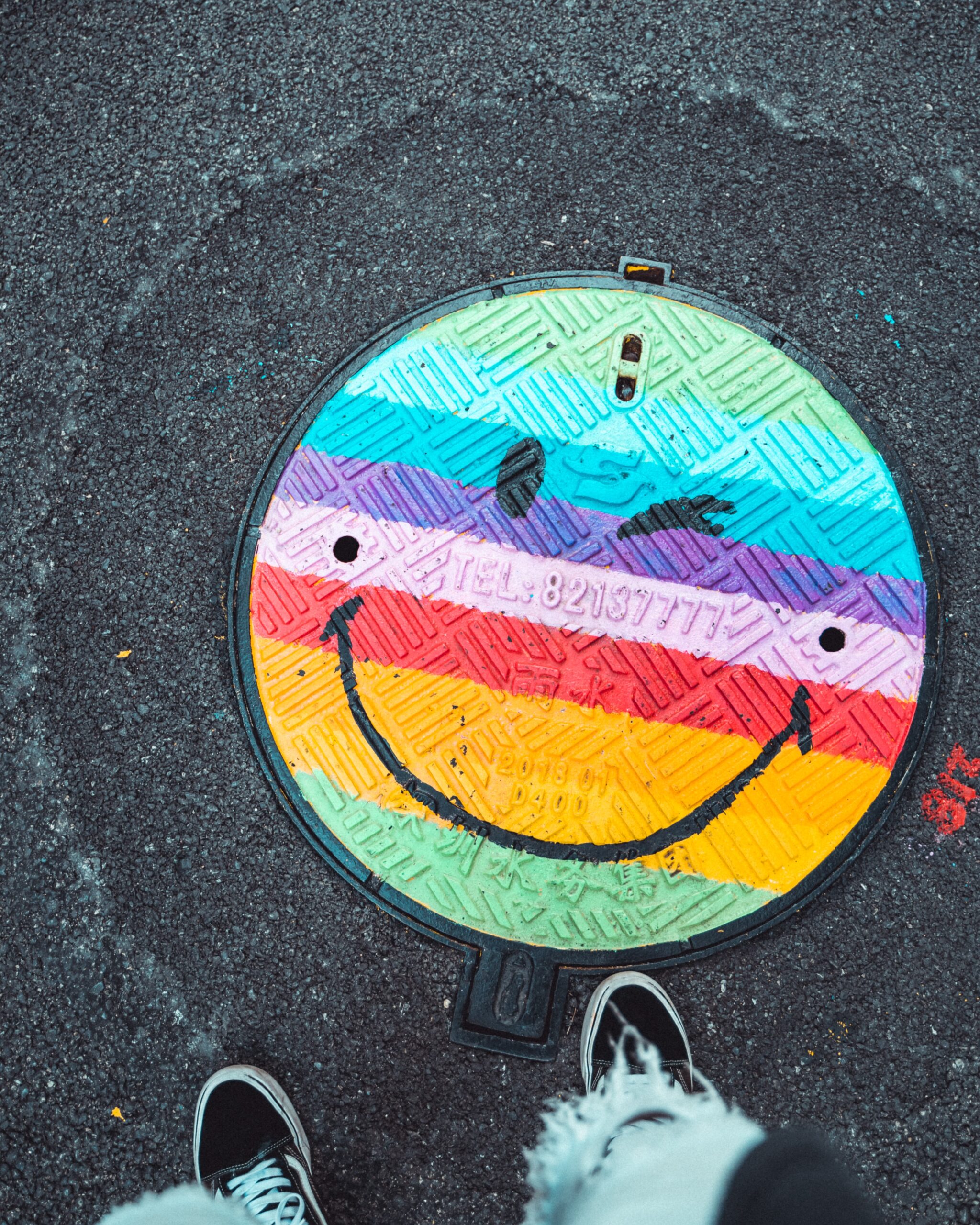The holiday season has past and now that the new year has begun, you may be feeling the desire for a fresh vision in 2023. A vision that supports your mental health, physical health, enriches your relationships, and just makes you feel good. If so, it makes sense that you would like to create one or two goals for yourself this year. Maybe it is to write the book you’ve been wanting to write or travel to a bucket list destination. Or maybe it is to simply ground and stabilize after a busy 2022.
Before you embark on setting your next goal, there are a few things to set in place first.
Not all goals are created equally
It is impossible to live a life in the 21st century without having our outer realm of influence persuade the goals you make. It used to be just our close group of friends and family but now we receive messages from EVERY where. Through the world of social media and the internet, our sphere of influence has extended beyond our family and peer groups to include explicit (in your face) messages, as well as those sneaky implicit messages from advertising, social media influencers, and a much larger group of friends you no doubt have online. Comparison is floating around our culture ALL THE TIME.
If we are not conscious of the comparison trap – attaching ourselves to someone else’s version of success – we can let our astronomical sphere of influence determine the goals that we set for ourselves. Then you end up setting a goal that was never really YOUR goal to begin with, setting you up for failure by decreasing the chance you’ll end up seeing the goal through and giving up on it prematurely. And if you do achieve the goal, it will likely not fill your heart with the pride and accomplishment you hoped it would.
While it is frustrating and disappointing to struggle with achieving your goals in the past, there is good news: it had more to do with the goal itself and not your ability or capacity to achieve it.
The Power of Intention
To turn this losing cycle around, the place to begin is by connecting an intention for how you want to feel during the process of meeting your goal and especially how you want to feel once that goal has been met. In his book, “The Power of Intention”, spiritual teacher and renowned author, Dr. Wayne Dyer imagines intention as “…not something you do but rather a force that exists in the universe as an invisible field of energy.” He reminds us that the word intention is in-spirited and that the force is something we have inside of us to attract the energy we desire towards us.
Here’s another way of looking at it: An intention is a desire that is subtle and not totally clear. It is like a soft bendy arrow pointing towards something you want. It is aspirational and offers you a direction. An intention to feel strong and confident. To feel good in your body. The intention to simplify or to find a loving partner or connect in a fun way with your teenager. It is the deeper reason (or force) underneath the more defined goal.
Goals are solid, concrete desires. They are the X pointing to exactly what you want. Like, “I’m going to run a marathon in March.” They are specific, measurable, challenging, actionable, and time dependent.
Intention is the why, it is part of the process. The goal is the destination that leads you into action. If you begin with an action, as we are all prone to do, without connecting it to an intention, it is more likely for you to abandon the goal. Intentions protect what is most important to you and helps you see it through to the end result.
How not to get swept into a goal that isn’t right for you
Let’s take a look at the example of running a marathon in March. There are some questions to consider here that apply to any goal:
- Why is this my goal?
- What do I want to feel like once I achieve it (vs. what do I want to do)?
- What is my intention?
- How is this goal aligned with my overall well-being?
- When you think about yourself at a peak time in your life, what was happening? What were you doing? Who were you being? How did you feel? Write this down and get specific. Think about what it smelled like, looked like, sounded like.
These answers provide a glimpse into your optimal well-being and what it means to you to flourish. A goal that taps into an intention feels good and elevates your well-being. Now you can discern if the goal is meaningful and something you are ready and motivated to achieve.
Choose goals that align with what you really, really want
If a goal aligns with your intention, then you know it’s built on a foundation of what you really want. That way you know it is a meaningful goal and not based on comparison or someone else’s goal or expectation of you.
If the goal doesn’t resonate with you it may not be the right goal for you. Which means once achieved (if at all) it may feel hollow and not fulfilling. This reflection affords you the opportunity to tweak or pivot in the direction of a new goal. For example, let’s say running a marathon by March is motivated by your desire to lose 10 pounds and your friend wanted you to sign up with her. When you reflect on what it is you want to feel, you realize it is to feel stronger or more connected to your body. You may recognize a more aligned goal is a regular morning yoga practice that incorporates strength training because that feels better to you than running most days. Plus, you can schedule a Saturday morning coffee date with your girlfriend to stay connected. Without taking the time to discern how you want to feel, you may move forward with the goal, end up achieving it, and notice that the celebration feels hollow.
Keep your intention front and center when setting your goals. Your intention is something you can refer to when you need that extra motivation to take action on a dreary Tuesday afternoon.
The intention is to your goal what a mantra is to your meditation. As a meditation teacher I remind my students that when your mind wanders from your mantra gently return your attention back to it as soon as you notice and begin again. It’s the same for your goals. Once your mind forgets why the goal was important to you (i.e. skip the Wednesday morning yoga sesh so that you could just get straight to work on a project deadline) your intention reminds you why and you begin again on Thursday.
Take the action necessary to move towards your goal
Intention is powerful, but not if you don’t take action to achieve your goal. Take some time to plan what is needed to move towards your goal. Avoid “all or none” thinking and avoid the unsustainable notion of going “full on” right out of the gate in order to move forward and achieve your goal.
If you decide on creating a morning yoga routine, write down what you will need to do to make it a routine. This might be looking at where you can put your mat and blocks so they are accessible. And how laying out yoga clothes the night before will make it easier in the morning to choose yoga. And potentially moving up your wake-up alarm each morning to carve out time for your practice would be a good step too. And it could be to commit to a 10-minute practice in week 1, then increase it to 15 minutes in week 2, and so on.
If your goal is to take a trip, your action plan might be to devise a savings plan. That could include opening a savings account, setting up an immediate transfer of money into the savings account each pay period, and working a side job for a certain amount of time to get extra money.
Small steps help you move towards your goal without burn out, or frustration of not doing enough, or letting fear derail you. Baby steps will allow you to see progress, feel accomplished, and remind yourself that what you do matters. Now it is time to put your planning into action! You’ve done the work leading up to your goal, you are taking the action… all that is left is to let go and trust the flow of things. Because you are taking responsibility, you can cultivate a relaxed commitment to your goal and let the rest flow.
Craft your contingency plan
It is also necessary to make a contingency plan because obstacles that challenge you and get in your way of completing your action steps are certain to come along. Obstacles can come in two forms:
- outer obstacles that come from the outside world like everyday distractions, unexpected emergencies, and everything in between.
- inner obstacles come from within and include limiting beliefs, inner criticism, patterns of perfectionism, doubt, and feelings of unworthiness.
A contingency plan, like your intention, encourages you to kindly begin again without any self-recrimination. It reminds you what to do if a challenge arises so that you stay on track (bye-bye “all or nothing” mindset!). To do this, craft a plan in the form of an if, then statement.
If I feel the fear, then I’ll take 3 deep breaths and remind myself that fear is false evidence appearing real.
If I skip a day of training, then I’ll get back on track the following day.
If I miss a morning of yoga, then I will take 10 minutes in the evening to unwind with some yoga poses.
Your contingency plan has your back and tells you exactly how to get through challenges without feeling guilty for any stumbling blocks along the way while also extending a little kindness to yourself.
Get some accountability and support
One thing that will maximize your potential for goal success is to enlist the help of another person. Most people find it difficult to create change in the early part of a goal if they are only accountable to themselves and it is important to get feedback on progress when pursuing any goal. Just like accountability helps increase productivity in the workplace, having someone who is willing to monitor your goal and encourage you, can help you succeed. Find someone who will support you towards your goals, offer check-ins to discuss your progress, and hold you accountable to your intentions and the things you said you were going to do. Bonus if they also remind you how you want to feel, not only at the conclusion of the goal, but along the way too.
In summary, the 5 tips to setting goals you will actually achieve and that feel good are:
- Set an intention for your goal – reflect on why this goal is important you and how you want to feel.
- Ask yourself if this goal is aligned with your optimal well-being and if not revise your goal
- Set an action plan with steps to achieve your goal – be specific, write it down, and remember small steps are great.
- Create a contingency plan for when obstacles arise (and they will arise).
- Find someone to hold you accountable and support you.
I hope you find some of this useful. My intention is to provide you with helpful tools to achieve your goals and stay true to your intentions, but this is really work I do one-on-one in coaching. That’s when I can help you bring out the best of yourself, give you personalized support, guidance, and be your cheerleader as you navigate your way towards a better way of feeling and being.
I also recorded a video on the topic for my One Life Question with Meg series.
I would love to hear about what your goals are and what you are working towards in 2023. So, feel free to drop me an email at meg@theintegratedheart.com.
And if living a more joyful and meaningful life is something you desire, and you’re ready to commit to making a positive change, you may schedule an Activate Your Well-being call with me. This session is designed to explore what feeling good, achieving your goals, and optimal well-being can look like for you. And even if we decide not to work together, you will walk away with some insights and clarity to activate your well-being.







